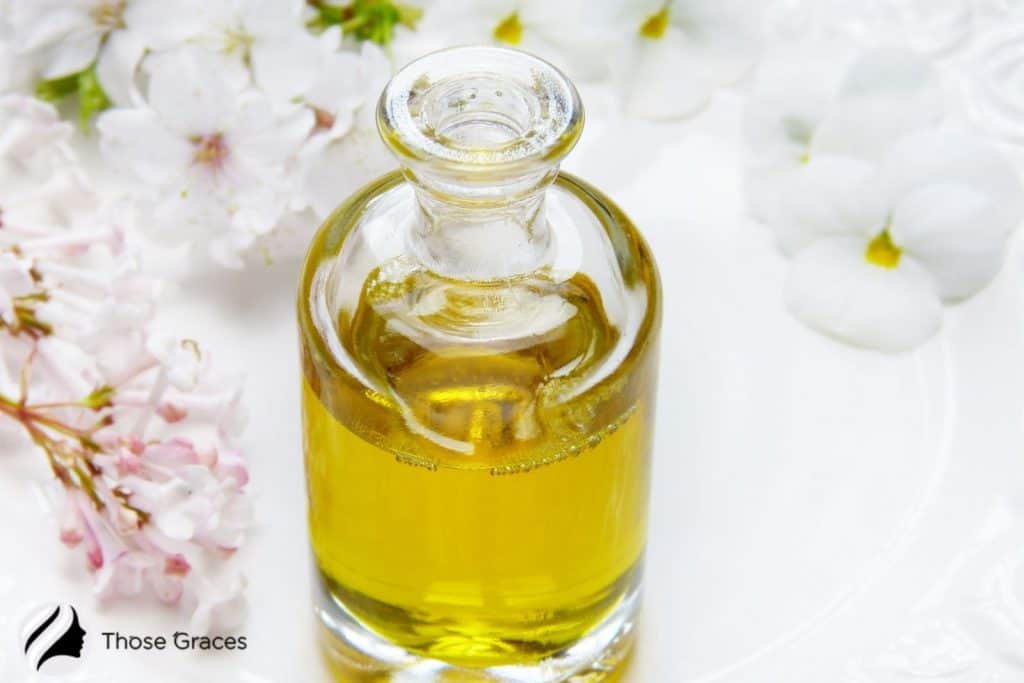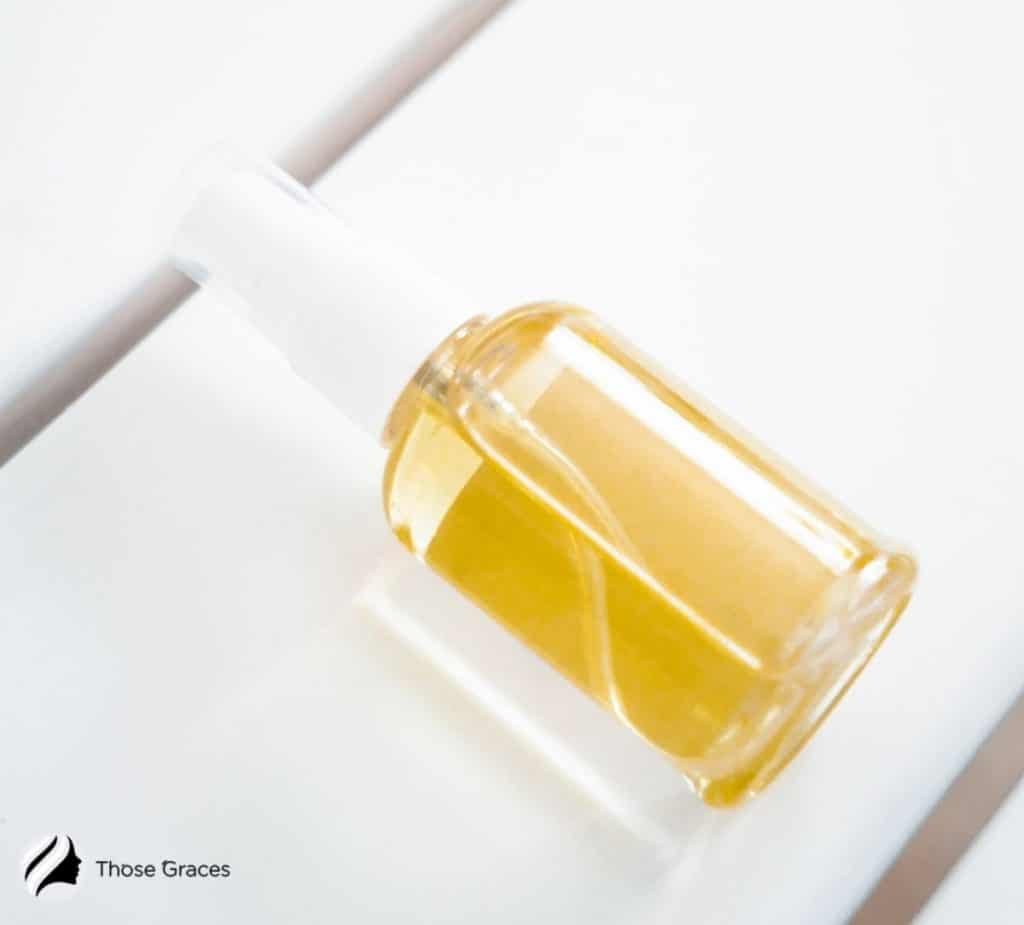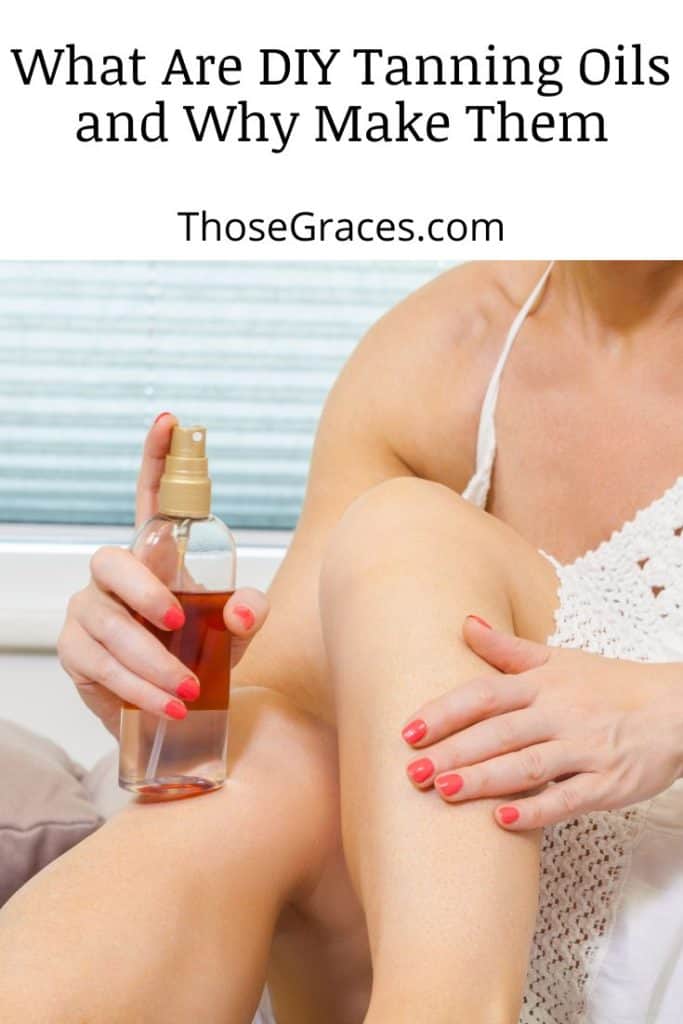Want to try making your own DIY tanning oil but don’t know where to start?
It’s actually a lot EASIER than you may think ― and I’m about to prove it.
Below, I’ll share some of my easiest and most effective DIY tanning oils.
Keep reading as I’ll share the benefits of using natural tanning oil and much more!
Table of Contents
Key Takeaways
- DIY tanning oil allows individuals to make their tanning products with NATURAL, skin-friendly ingredients.
- Essential oils such as coconut oil, almond oil, and avocado oil are commonly used in DIY tanning oils due to their MOISTURIZING properties.
- Making your tanning oil is a COST-EFFECTIVE alternative to store-bought products and allows individuals to customize their formula for their skin type.
Related: 7 Awesome Outdoor Tanning Tips
What Are DIY Tanning Oils and Why Make Them
Get ready to ditch the harmful chemicals and bask in the sun with a stunning, healthy tan with this DIY tanning oil alternative.
Say HELLO to the world of DIY tanning oil.
Here, you have the power to handpick the right ingredients to create a potent mixture that intensifies your tan and keeps your skin hydrated and protected.
For those with pale or fair skin, commercial tanning products can come with the risk of skin cancer, as they contain various synthetic additives that can damage the skin.
With DIY tanning oil, you can be confident that you’re avoiding these harmful chemicals and opting for a safer, all-natural solution.
The key to a thriving natural tanning oil is choosing ingredients that promote tanning while nourishing and protecting your skin.
Some of the most popular ingredients used in DIY tanning oil include coconut oil, known for its hydrating properties, and olive oil, an excellent moisture source [1].
Additionally, you’ll want to include essential oils like carrot seed and lavender, renowned for their skin-loving benefits.
Plus, you’ll get the bonus of feeling like a mad scientist, experimenting with different ratios and variations until you find the perfect blend that works best for you.
This all-natural DIY tanning oil is the perfect solution for anyone looking to achieve a beautiful, healthy tan this summer without sacrificing their skin’s health.
So, why not follow in the footsteps of iconic fashion icon Coco Chanel and embrace the sun with a little help from your new secret weapon – DIY tanning oil?
Researchers at Healthline write: “Never use a tanning oil that does not contain sun protection. [2]”.
Not only will this natural tanning oil give you a stunning tan, it will also leave your skin soft, smooth, and protected from the sun’s harmful rays.
Get ready to dive into the world of natural tanning with this must-watch video on DIY tanning oil:
5 Benefits of Homemade Tanning Oils
Before I give you my homemade tanning oil recipes, I should probably tell you what your effort is worth. Right?
So let’s go over the benefits of using DIY tanning oils.
Before we do that, though, I need to remind you that we don’t condone or recommend natural tanning.
Artificial tans- whether through a lotion or the best at home spray tan system– are the only “safe†methods (as long as you’re not allergic to them, obviously).
You’re a grownup, and you’ll make your own choices. So, I’m just giving you information to make the right one.
Now, let me discuss the 5 benefits of homemade tanning lotion:
1. Safer Compared to Manufactured Tanning Oils
I get older, and I’m slowly becoming conscious of what I apply to my skin.
Like other beauty products, tanning oils have some chemicals that give them fragrance, coloring, etc.
Tanning oils contain paraben, BHT, and formaldehyde, among others.
Although the FDA regulates the chemicals, excessive or long-term usage of commercial tanning lotions can affect your skin.
So, this summer, you may want to give your skin a chance to breathe and use homemade tanning oil.
Besides being non-toxic, natural tanning oils keep your skin hydrated, provide it with vitamin E, and make sunlight absorption safe.
Plus, they’re gentler on your delicate parts, which is especially important if you try nude tanning!
2. Super Easy To Make: Convenient Ingredients from Your Pantry
This is always my favorite part of DIY skincare products. In most cases, you’ll always have the ingredients in your pantry.
This can come in handy if you want to tan in your backyard and don’t want to make that trip to the beauty shop.
Also, I have accumulated so many oils that I rarely use from my many food recipes and beauty DIY projects, and homemade beauty tips allow me to utilize them.
Try your local pharmacy or supermarket if you don’t have the ingredients I use in the DIY tanning oil recipes I’m about to share.
3. Super Fabulous For a Tan

The best thing about homemade natural oils is that you don’t need to supplement them.
In other words, you don’t need to add other products to improve your skin’s texture and absorption power.
Most natural oils attract enough sun to your skin, which may reduce the time you lay your body under the sun to get a tan.
However, it’s important to remember that, like store-bought oils, they offer no protection from harmful UV rays.
4. Pocket Friendly: Cost-effective Solution
I never shy away from a tip that saves me a few bucks (especially with the pandemic uncertainties).
You may need to spend a few dollars to buy some ingredients, but it’s nothing compared to your spending on commercial tanning oils.
We can all agree some tanning oils are ridiculously priced!
5. Full Transparency of Ingredients
Yes, tanning oil companies list all ingredients they use to manufacture their products, but let’s not be naïve and pretend they’re transparent about their whole process.
You may know there is always a particular ingredient (like granny’s secret ingredient, which in most cases is always gin).
But with homemade natural tanning oils, at least you know what’s in them.
3 Tanning Oil Ingredients YOU NEED
Besides essential oils used in making homemade oil tans, there are a few other everyday ingredients you’ll want to grab.
FYI, this post contains affiliate links. I earn a small commission at no extra charge if you purchase through these links.
1. Raspberry seed oil.
The seed contains nutrients that protect your skin from premature aging and skin damage.
It’s also high in carotenoids and antioxidants that facilitate melanin production. If you can’t find it in your favorite natural food store, Amazon has it.
No products found.
2. Carrot juice.
Traditionally, people used to drink carrot juice for a natural tan. And no, it doesn’t turn your face orange.
Like raspberry, it contains carotenoids that enhance melanin production.
Carrot juice is also used to protect the skin against sunburns, so you’ll likely see it in many natural oil recipes.
You should have no problem finding this right in your grocery store’s juice aisle. It’s also available on Amazon, but fair warning: it’s a lot pricier there.
No products found.
3. Beet juice.
A concoction of beet juice and carrot juice is one of the traditional tanning products.
Together, they attract sun rays giving you a tan, but it doesn’t last long. I’ll discuss more of this in the next section.
Try a specialty health food store if you can’t find it in your grocery store.
The juice is fairly pricey on Amazon, but they have a supplement-size bottle that should work fine for your DIY tanning oil purposes.
No products found.
What Can be Used as a Tanning Oil?
Tanning oils are essential for your tanning process, but they have substitutes too. And the best part?

You probably have several tanning oil substitutes in your house and don’t even know. Below are some examples and why they’re used in place of tanning oils.
1. Sunflower
Sunflower is lauded in the suntan oil industry for a reason. It’s an excellent natural moisturizer that helps prevent your skin from cracking under UV rays.
It also helps maintain your skin’s elasticity, which is another reason it’s at the top list of tanning oil substitutes.
Lastly, the sunflower is rich in linoleic acid and vitamin E, eliminating acne and premature aging.
2. Olive Oil
Olive oil is a household name in the beauty industry. I’ve used it to get rid of acne and my hair to give it a shine or body.
Olive oil is rich in vitamin E and antioxidant properties that make it pass as a tan oil. It also moisturizes your skin well.
The oil gives the skin a darker tone, so with olive oil and a little carrot juice, you can achieve a dark tan without spending much time in the sun.
I prefer using extra virgin olive oil for skin care routines because it’s not processed, so it gives better results.
3. Wheat-Germ Oil
This oil is rich in antioxidants, vitamins A, B, D, and E, essential to the skin during the tanning process.
It also has anti-aging properties critical when exposing the skin to the sun for too long.
4. Hazelnut Oil
I’m sure you’ve seen hazelnut oil on the ingredient list of commercial tanning oils. It’s used in suntans because it’s easily absorbed by the skin thanks to its high-fat content.
The oil ensures that your skin stays hydrated even when exposed to the sun.
Like other oils, Hazelnut oil also has vitamin E and maintains the skin’s natural elasticity.
5. Green Tea Extracts
I know you only know the impact of green tea when it comes to losing weight and detoxing.
But green tea extracts are also among the best oils for tanning oil.
They’re rich in vitamin E and Epigallocatechin-3-gallate (EGCG), an antioxidant that’s 20 times stronger than vitamin E.
While it won’t completely protect you from the sun’s damage, one study found that it does minimize the risk of burns.
This is because matcha powder is the purest form of green tea, so your skin enjoys the full power of the leaf. It mixes well with any formula, so application is easy.
6. Aloe Vera
This is another household name in the beauty industry. It contains over 75 active nutrients, including B12, A, C, and E, perfectly fitting the list.

Aloe vera is commonly used to treat sunburns, but you can use it to prevent them instead.
I love to apply aloe vera on wet skin before my suntan because it traps moisture.
I also apply it again before laying on my mat for added protection from sun damage and sunburns.
Application is easy, too; convert the aloe vera gel into oil and use it for tanning sessions.
7. Avocado Oil
Skincare enthusiasts across the globe love avocado oil, and that’s because it has so many nutrients.
It’s rich in vitamins B1, B2, B5, E, K, D, C, and A. Avocado oil helps repair skin due to its fatty acids and lecithin.
What makes avocado oil a good tanning oil is its hydrating properties and the fact that it can act as a natural sunscreen.
The oleic acid in avocado oil ensures your skin doesn’t dry from the UV rays’ intensity.
Avocado oil also has anti-aging properties, which is very important when exposing the skin to a long time under the sun.
8. Coconut Oil
If you have sensitive skin like me and it has made you paranoid about trying anything new, coconut oil will work for you.
Coconut oil is one of the best substitutes for tanning oil because it’s safe for all skin types (although check with your dermatologist first if you have any conditions). Read my guide about coconut oil for tanning.
It works well as a tanning oil because it contains fatty acids and can be easily absorbed into the skin.
The oil also has SPF content that can give you more protection from harmful UV rays. The best part is that you can use the oil for outdoor and indoor tanning.
Like olive oil, I recommend using extra virgin coconut oil.
9. Sesame Oil
Last on my list is sesame oil, and I promise it’s worth the trouble despite it smelling like a skunk.
The yellow color of sesame oil gives you a golden fast tan while protecting you from harmful UV rays.
It also helps repair and moisturize the skin, which is critical for tanning.
To get the desired results, use cold-pressed or organic sesame oil.
I know they’re other substitutes for tanning oil that I haven’t mentioned.
The nine oils I mentioned are what I’m confident in through my own experiences, extensive research, and reviews from trusted sources.
You can try them and see how well they work with your skin.
One thing I want to remind you about, though- like using baby oil for tanning, these won’t completely protect you from sun damage.
Yes, a few offer “more†protection than going without, but a full-spectrum SPF lotion that blocks out the sun’s rays is the only natural protection. Even that isn’t infallible.
So, use oils sparingly and keep your tanning sessions brief:
3 Easy to Make DIY tanning Oil Recipes
Are you tired of feeling left out at the beach, with your pale skin not being able to match up to the golden tans of others?
Don’t worry; now you can achieve a radiant and healthy tan with these easy-to-make DIY tanning oils!
Say Goodbye to Harmful Chemicals!
Gone are when you had to rely on chemically infused products to achieve a tan.
With these homemade tanning oils, you’ll be saying goodbye to skin cancer-causing chemicals and hello to a gorgeous, all-natural glow:
Recipe #1: Tropical Tanning Oil
If you’re trying to become the tannest you can be, this is the only recipe you need to read on this list.
The sesame oil in this recipe has a dark tint, making achieving that dark skin tone easy.
How to Prepare the Tropical Tanning Oil
Ingredients.
- 8 tablespoons of sesame oil
- 8 tablespoons of coconut oil
- 8 tablespoons of walnut oil
- 1 cup of coconut oil
- Lavender essential oil (or any other essential oil of your choice)
Directions
- Ensure that the coconut oil is liquid and heat it on low heat if it is gel-like.
- Pour the coconut oil into a bowl and add the sesame oil, coconut oil, and walnut oil.
- Add lavender essential oil to the mixture.
- Stir until you get a uniform mixture.
- Store in an airtight glass container.
Recipe #2: Hydration Boost Homemade Tanning Oil
If you have dry, flaky skin, tanning can be a challenge.
This recipe will protect your skin from UV rays while keeping it hydrated, making tanning a breeze.
The ingredients in this recipe will also boost collagen production, keeping your skin elastic and protected from sunburns.
How to Prepare tanning Oil for Dry Skin
Ingredients
- Patchouli oil (or any other essential oil)
- 8 tablespoons of walnut oil
- 8 tablespoons of avocado oil
- 8 tablespoons of wheat germ oil
- 8 tablespoons of sesame oil
Directions
- Mix the walnut oil, wheat germ oil, sesame oil, and avocado oil in a glass bowl.
- Shake the mixture to form a uniform mixture or stir.
- Add patchouli oil (if desired for scent) and store in an airtight container.
Recipe #3: Tanning Oil for Fairies
Being fair-skinned can make tanning challenging, but it shouldn’t stop you from getting that gorgeous summer glow.
This recipe will protect your skin from UV rays and give you a gradual, irritation-free tan.
How to Make Tanning Oil for Fairies
Ingredients
- 1 cup of olive oil
- 2 tablespoons of carrot seed oil
- 2 tablespoons of raspberry seed oil
- 8 tablespoons of avocado oil
- Sandalwood essential oil
Directions
- Pour the olive oil into a bowl.
- Add the avocado oil and stir until a uniform mixture is formed.
- Add the carrot seed oil and raspberry seed oil to the mix and keep stirring.
- Lastly, add the sandalwood essential oil and store it in an airtight container.
Not only can you use this combination as a tanning oil, but you can also use it as a daily moisturizer or sunscreen!
Besides using this combination as tanning oil, you can also use it on your way to work or at the beach. The ingredients have a high SPF, which acts as a sunscreen to protect you from UV rays.
As a tanning oil, it gives you a gradual tan without irritating your skin.
How to Prepare Your Skin Before Using DIY Tanning Oil

Before applying your DIY tanning oil, ensure your skin is well exfoliated.
This will ensure your pores are open and all dead skin is gone, allowing easy absorption of the tanning oil.
This should be done at least 8 hours before applying the oil because the pores expand after exfoliation. And the pH of your skin isn’t at its normal level.
To simplify this, scrub your skin the night before your tanning session.
FAQs
1. What are the benefits of using DIY tanning oil compared to commercial products?
2. How do I customize my DIY tanning oil to fit my skin type?
3. Can DIY tanning oil be used as an everyday moisturizer?
4. Is it necessary to use sunscreen with DIY tanning oil?
5. How long does the DIY tanning oil take to show results?
DIY Tanning Oil: Natural Homemade Solutions (Conclusion)
Achieving a beautiful, sun-kissed glow has never been easier with DIY tanning oil.
Whether you’re looking to avoid harmful chemicals, promote a healthier tan, or love using natural products, this option is perfect for you.
With the recipe outlined in this blog post, you can create a custom tanning oil tailored to your skin type, giving you a natural and radiant look.
So, why settle for anything less? Embrace the power of nature and try making your DIY tanning oil today!
So, what is your best substitute for tanning oil?

What are your favorite DIY tanning oils? share below!
Resources
1. Ruggeri, CHHC C. Use Coconut Oil for Your Skin! [Internet]. Dr. Axe. 2020. Available from: https://draxe.com/beauty/coconut-oil-for-skin/
2. Gallagher G. How to Safely Get a Tan in the Sun Faster [Internet]. Healthline. 2020. Available from: https://www.healthline.com/health/how-to-tan-faster


